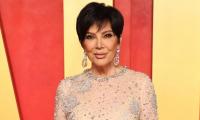WASHINGTON: US economic growth slowed in the fourth quarter, but not as sharply as previously estimated, with fairly strong consumer spending offsetting the drag from efforts by businesses to reduce an inventory overhang.
Gross domestic product increased at a 1.4 percent annual rate instead of the previously reported 1.0 percent pace, the Commerce Department said on Friday in its third GDP estimate.
Relatively strong consumer spending underscores the economy's underlying strength and should further allay fears of a recession, which triggered a massive stock market sell-off early this year. That, together with a tightening labor market and rising inflation likely keeps the Federal Reserve on a path to gradually raise interest rates this year.
"The consumer is back in the driver's seat. There is no sign of recession in these data so this will put a smile on Fed officials' faces and argues for their policy of gradual interest rate normalization to continue," said Chris Rupkey, chief economist at MUFG Union Bank in New York.
GDP growth was initially estimated to have risen at only a 0.7 percent rate. The economy grew at a 2.0 percent pace in the third quarter and expanded 2.4 percent for all of 2015.
Consumer spending, which accounts for more than two thirds of U.S. economic activity, rose at a 2.4 percent pace and not the 2.0 percent rate reported last month. More consumption of services than previously estimated accounted for the revision.
Spending is being supported by rising wages as the jobs markets tightens, as well as firming house prices. Gasoline prices around $2 per gallon are also helping to underpin household discretionary spending.
The dollar was trading marginally higher against a basket of currencies. The U.S. stock and Treasury debt markets were closed for Good Friday.
Fourth-quarter inventory investment was revised lower. Still, inventories remain high relative to domestic demand.Businesses accumulated $78.3 billion worth of inventory rather than the $81.7 billion reported last month. As a result, inventories subtracted 0.22 percentage point from GDP growth instead of the previously reported 0.14 percentage point. First-quarter GDP growth estimates are around a 1.5percent rate. But with the inventory pile still large and shipments of capital goods ordered by businesses weak in January and February, the risks to growth are tilted to the downside.
There was some bad news in the GDP report, with corporate profits falling for a second straight quarter as a strong dollar and cheap oil undercut the earnings of multinational and energy companies.
Profits after tax with inventory valuation and capital consumption adjustments declined at an annual rate of 8.4 percent, the biggest drop since the first quarter of 2014, after falling at a 1.7 percent pace in the third quarter.
For all of 2015 profits dropped 5.1 percent, the largest decline since 2008, after slipping 0.6 percent in 2014.
Profits from current production fell $159.6 billion after decreasing $33.0 billion in the third quarter. Part of the drop was due to a $20.8 billion transfer payment related to the BP oil spill in the Gulf of Mexico in 2010, which was the largest-ever U.S. offshore oil spill.
But even accounting for the oil spill settlement, which translated to an $83.2 billion rate of decline in profits, earnings were still weak. Profits from the rest of the world fell $6.5 billion after decreasing $23.1 billion in the third quarter. Manufacturing profits tumbled $139.2 billion during the last quarter after falling by only $4.1 billion in the July-September period. Profits in the petroleum and coal products sector plunged $124.3 billion after rising $7.0 billion in the third quarter.
"This poor performance reflects energy firms struggling with lower oil prices and manufacturing firms hit by the strong dollar," said Jesse Edgerton, an economist at JPMorgan in New York. "But it also likely reflects the beginnings of a profit margin squeeze driven by tighter labor markets, rising wages, and weak productivity growth."
The dollar gained 10.5 percent last year versus the currencies of the United States' main trading partners, putting a squeeze on the profits of multinationals such as Procter & Gamble and Colgate-Palmolive.
A more than 60 percent plunge in crude oil prices from highs above $100 a barrel in June 2014 has also weighed on the profits of oilfield service firms like Schlumberger and Halliburton.
An undated image of the Honda Atlas Cars logo. — AFP/FileKARACHI: Honda Atlas Cars Limited celebrated its 30-year...
InfraZamin and Sundridge Foods Limited officials posing for photograph. — Facebook@InfraZaminPakistan/FileKARACHI:...
This image shows an advertisement stall of BankIslami. — Facebook@bipl.official/FileKARACHI: JS Bank and BankIslami...
PCJCCI logo can be seen on a computer screen, image taken on November 5, 2024. — Thenews/AquibAliLAHORE: The...
A Wall Street sign hangs in front of a US Flag outside the New York Stock Exchange before the Federal Reserve...
A representational image of young people working in a company. — AFP/FileLAHORE: The ability of our economy to...







